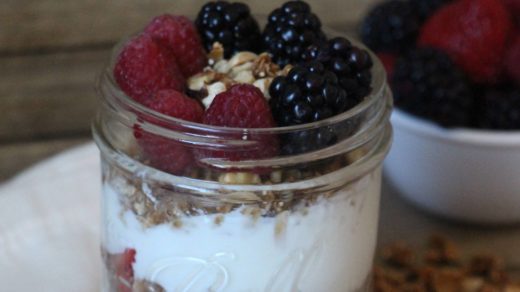Over the past 50 years, medical advances have led to a more sophisticated understanding of the causes of Type 2 diabetes and to an abundance of new tools for managing it. But better treatments have done little to stem the rise of the disease.
One in seven American adults has Type 2 diabetes now, up from one in 20 in the 1970s. Many teenagers are developing what was once considered to be a disease of older people; 40 percent of young adults will be diagnosed with it at some point in their lives.
Researchers who study Type 2 diabetes have reached a stark conclusion: There is no device, no drug powerful enough to counter the effects of poverty, pollution, stress, a broken food system, cities that are hard to navigate on foot and inequitable access to health care, particularly in minority communities.
“Our entire society is perfectly designed to create Type 2 diabetes,” said Dr. Dean Schillinger, a professor of medicine at University of California, San Francisco. “We have to disrupt that.”
Dr. Schillinger and nearly two dozen other experts laid out a road-map for doing so earlier this year in a comprehensive national report to Congress on diabetes, the first of its kind since 1975.
It calls for reframing the epidemic as a social, economic and environmental problem, and offers a series of detailed fixes, ranging from improving access to healthy food and clean water to rethinking the designs of communities, housing and transportation networks.
“It’s about massive federal subsidies that support producing ingredients that go into low-cost, energy-dense, ultra-processed and sugar-loaded foods, the unfettered marketing of junk food to children, suburban sprawl that demands driving over walking or biking — all the forces in the environment that some of us have the resources to buffer ourselves against, but people with low incomes don’t,” Dr. Schillinger said.
“We feel impotent as doctors because we don’t have the tools to tackle the social conditions people are grappling with,” he added.
The report, issued in January, calls for setting up a national policy office to roll out a far-reaching strategy to prevent and control diabetes. The document also pushes for a greater involvement of federal agencies, like those regulating housing and urban growth, that may seem to have little to do with health but could play a role in reducing the spread of the disease.
The recommendations are intended to tackle the so-called social determinants of health, said Felicia Hill-Briggs, vice president for prevention at Northwell Health.
What’s in the Inflation Reduction Act
“When we move beyond thinking of health as just biological disease, then we’re able to see that the conditions in which people are born, grow, work, live and age play a very, very key role in influencing who gets disease and what the outcomes of the disease are,” Dr. Hill-Briggs said.
“Being born into poverty should not determine whether you have access to food, or green space, or an educational system that works.”
Each patient with Type 2 diabetes faces a cascade of risks, including painful nerve damage, vision loss, kidney disease and heart disease, as well as foot and toe amputations. (Type 1 diabetes, once called juvenile diabetes, carries many of the same risks but is believed to be an autoimmune condition.)
As of 2019, more than 14 percent of Native American and Alaska Native adults had diabetes, according to the Centers for Disease Control and Prevention. The figure for Black and Hispanic adults was about 12 percent, compared with 7.4 percent for white adults.
Maria Garcia, a 58-year-old restaurant worker in San Francisco, developed Type 2 diabetes after a pregnancy almost 30 years ago. She has developed numerous complications over the years, including digestive problems, vision loss and nerve damage so severe that she has trouble walking. At night, her legs feel as if they were “on fire,” she said.
She has given up sweetened soda but said she can’t afford to purchase healthy foods like lean meat, fish and vegetables on a regular basis. It was very different in the small village in Mexico where she was born, she recalled.
“Fresh food was really cheap, and sweets and candies were expensive,” she said, adding, “We walked everywhere, even just to go to the store.”
Many of the recommendations now urged by diabetes researchers are both politically unpalatable and costly. But they could save money in the long run: One in four health care dollars goes to treat diabetes, and that costs the nation $237 billion annually (most of it paid for by government health plans), along with $90 billion in reduced productivity.
Among the proposals:
-
Subsidies for farmers to grow healthy foods like fruits, vegetables and nuts in order to make them more affordable.
-
Paid maternity leave for working mothers so they can breastfeed, a practice associated with a lower risk of obesity and Type 2 diabetes for both mother and child.
-
Clear guidance from the government about the strong link between sugar-sweetened beverages and Type 2 diabetes. Almost one in 10 nutrition-program dollars is spent on sweetened drinks, and the researchers recommend that government programs no longer pay for them.
-
Improved nutrition labels that specify the amounts of sugar in drinks in teaspoons, a measure that consumers can easily grasp, rather than grams. A 16-ounce Starbucks frappuccino contains 11 teaspoons of sugar; a 16-ounce bottle of Snapple raspberry ice tea has nine teaspoons.
The report also proposes hefty taxes of 10 percent to 20 percent on the price of sugary drinks. The beverage industry has aggressively fought similar efforts in the past.
William Dermody Jr., a spokesman for the American Beverage Association, pointed to studies showing drops in the consumption of soda and other sugary beverages, not counting tea and coffee drinks. But taxes have had little effect on consumption, he said.
Even the American Diabetes Association prefers more public education about the risks of sugary drinks to taxes or “punitive measures,” said Dr. Robert Gabbay, the association’s chief scientific and medical officer.
The conflict between the food industry and researchers has raged for decades, but the fast-spreading epidemic of Type 2 diabetes has lent greater urgency to questions about improving what Americans eat.
Healthy, unprocessed food is more costly, which has led some providers to open their own free pantries so that patients with “food prescriptions” can pick up produce, beans and items like cans of low-sodium turnip greens.
The food pantry at Nashville General Hospital helps Arleen Hicks, 59, who is unemployed and has diabetes, prepare healthy dinners. For her first two meals of the day, she eats as cheaply as possible, usually knockoff toaster pastries that are filled with sugar, which she follows with two tablespoons of peanut butter to bring her blood sugar back down.
She knows that toaster pastries are not nutritious, but they’re cheap. She lives on a monthly income of $607 and $100 in food stamps.
“I get coupons for them in the mail,” Ms. Hicks said, as she picked up zucchini, tomatoes and easy-to-follow recipes at the hospital’s food pantry. “This place has been heaven-sent.”
Some of the concerns expressed by diabetes researchers have been addressed in recent federal legislation. The Inflation Reduction Act, for example, capped the co-payments that Medicare patients shell out for insulin at $35 a month and included $50 billion to strengthen the nation’s drinking water and wastewater systems.
The report’s authors also want to make it easier for patients and people at risk for Type 2 diabetes to take in-depth courses to learn how to manage and prevent the disease. Doctors often say that managing diabetes is like having a full-time job.
Loretta Fleming, 53, who lives in New York City, didn’t know how to keep her blood sugar under control until she enrolled in peer education classes through Health People, a nonprofit, at a community center in her neighborhood in the Bronx.
“I saw dietitians and nutritionists at the hospital, but their education didn’t match what I got from the program,” Ms. Fleming said. Though the classes, she has learned to limit bread and sugary drinks and to check her feet every day for sores that could become infected. She has lost over 100 pounds and has also become a peer educator.
“I used to drink a three-liter soda every day,” she said. “It was a ritual. I had to have my soda. So I had to get rid of that. I didn’t know it was bad for me.”


